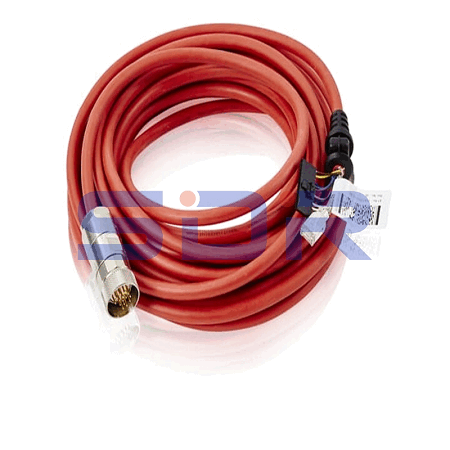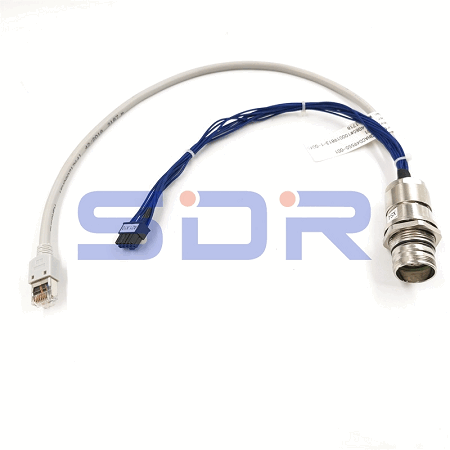The ABB Robot Teach Pendant Cable plays a crucial role in the operation and programming of ABB industrial robots. It serves as a critical interface between the operator and the robot, allowing for seamless communication and control over the robot's movements and functions. Its significance lies in its ability to facilitate real-time control, data exchange, programming, and teaching of the robot. This cable enables operators to interact with the robot, monitor its status, program its behavior, and teach it new tasks. In this essay, we will delve into the various functions and significance of the ABB robot Teach Pendant Cable.

To understand the purpose of the Teach Pendant Cable, it is essential to grasp the concept of industrial robotics. Industrial robots are advanced machines designed to perform various tasks with high precision and efficiency. These tasks can range from simple material handling to complex assembly processes. The teach pendant cable acts as the primary means through which an operator interacts with the robot and instructs it to perform specific tasks.
One of the primary functions of the teach pendant cable is to provide a physical connection between the teach pendant (a handheld device) and the robot controller. The teach pendant is essentially a control panel equipped with buttons, joysticks, and a display screen. Through this cable, the operator can send commands and instructions to the robot, such as start/stop commands, program selection, and manual control of the robot's movements.
Moreover, the teach pendant cable facilitates real-time data exchange between the operator and the robot controller. The controller serves as the brain of the robot, overseeing its operations and executing the programmed instructions. The cable enables the operator to monitor the robot's status, such as position, speed, and error messages, displayed on the teach pendant screen. This feedback allows operators to make instant adjustments or diagnose issues during the robot's operation.

The teach pendant cable also serves as a means for programming the robot. Industrial robots are programmed to execute specific tasks autonomously or under the supervision of an operator. The teach pendant cable enables the transfer of programming data from a computer to the robot controller. The operator can use dedicated software to create and modify robot programs, defining the sequence of motions and actions required to perform a particular task. The cable facilitates the seamless transfer of program data, updating the robot's behavior and enabling it to perform new tasks effectively.
Furthermore, the teach pendant cable plays a critical role in the teaching or programming by demonstration process. This method involves manually guiding the robot through a desired sequence of actions, which the controller records and translates into a program. The teach pendant cable relays the operator's movements and actions to the robot controller, allowing for the accurate reproduction of the taught program. This feature makes it easier for operators without in-depth programming knowledge to set up and teach the robot quickly.
The design and construction of the teach pendant cable are also worth mentioning. Given the demanding industrial environments in which these cables are used, they are engineered to be durable and resilient. They are constructed using high-quality materials that can withstand extreme temperatures, vibrations, and mechanical stress. Additionally, to ensure reliable communication, the cables are shielded to minimize electromagnetic interference that can affect the signal integrity during data transfer.
In conclusion, the ABB Robot Teach Pendant Cable serves as a vital communication link between the operator and the industrial robot.With the help of the teach pendant cable, ABB industrial robots can be effectively utilized to enhance productivity, accuracy, and efficiency in various industries.